Have Any Questions?
+91-83529-58000
The Ultimate Guide to the Best Time to Visit Triund Trek
When to Go for the Best Experience.
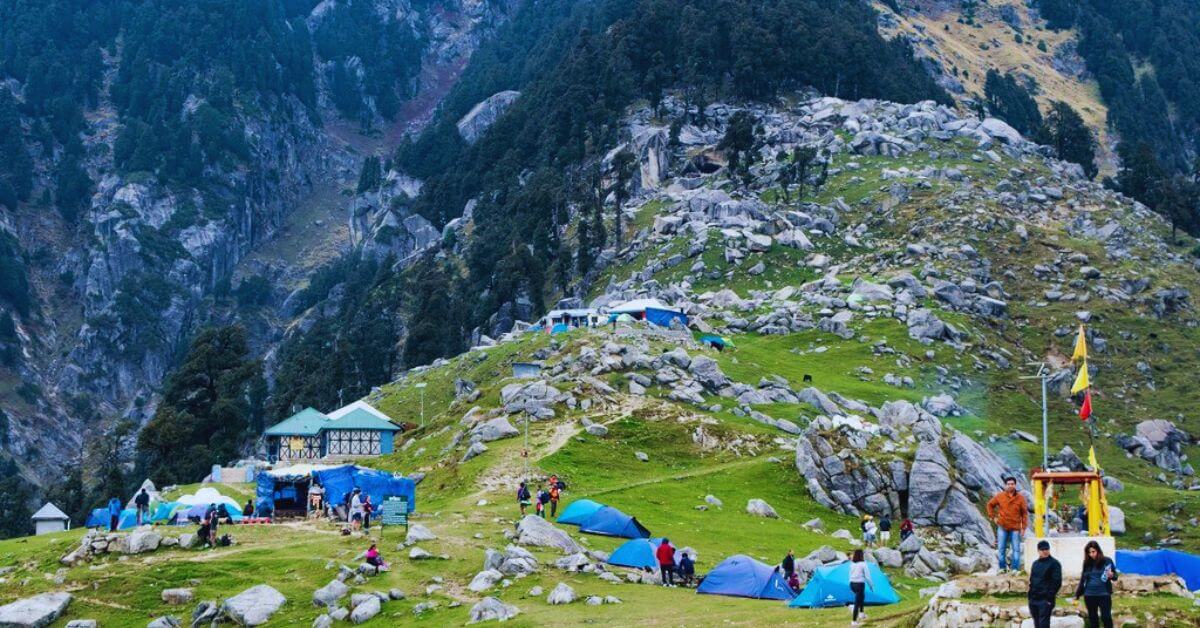
Nestled in the heart of Himachal Pradesh, Triund Trek is a breathtaking escape from the hustle and bustle of daily life, offering an adventurous retreat surrounded by lush forests, rolling meadows, and majestic Himalayan views. However, like any popular trekking destination, timing can make all the difference to ensure you have an ideal experience. Here’s the ultimate guide to the best time to visit Triund Trek, covering everything from weather conditions and crowd sizes to seasonal attractions.
Introduction to Triund Trek
Located at an elevation of about 2,850 meters (9,350 feet) above sea level, Triund Trek offers an easy to moderate trail suited for beginners as well as seasoned trekkers. The trek begins from the picturesque town of McLeod Ganj, also known as “Little Lhasa” due to its vibrant Tibetan community. Covering around 9 kilometers, the Triund Trek rewards visitors with scenic landscapes, stunning sunset views, and the tranquility of the Dhauladhar range.
Seasonal Overview: Triund Trek Weather and Conditions
Triund is accessible almost year-round, but each season brings its unique beauty and challenges. Understanding the seasonal weather will help you decide the best time to visit:
- Spring (March to May)
- Summer (June to August)
- Autumn (September to November)
- Winter (December to February)
Let’s dive into each season and explore what it offers trekkers in terms of weather, crowd sizes, flora and fauna, and overall experience.
1. Spring (March to May): A Blooming Delight
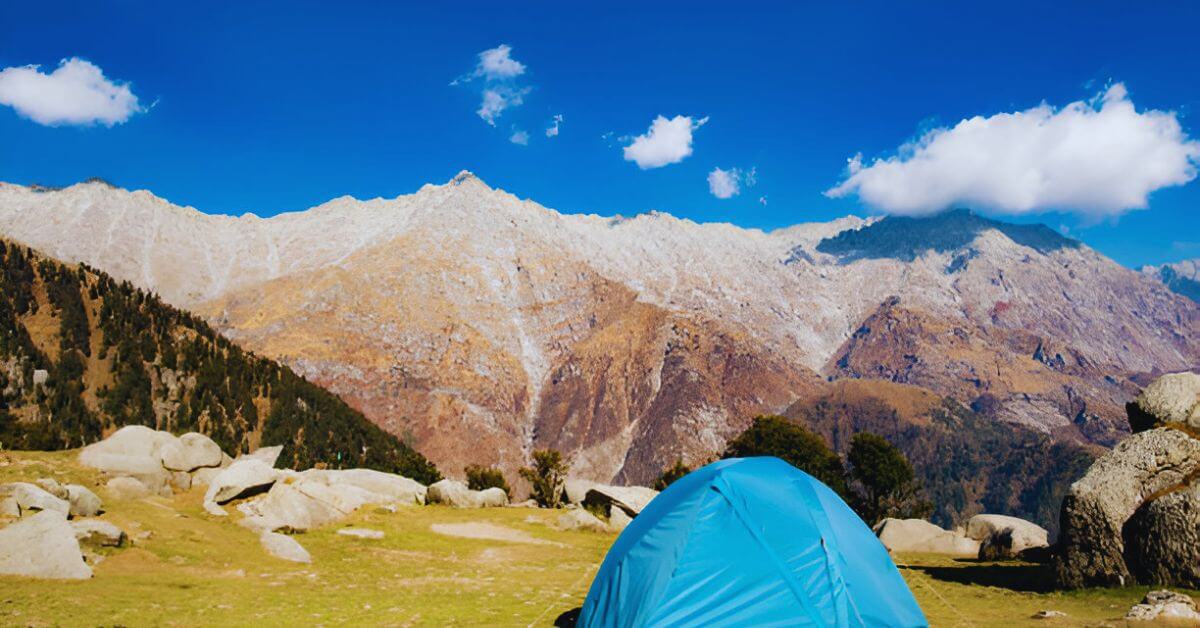
Weather: Spring is one of the best times to visit Triund, as the weather is pleasant with daytime temperatures averaging between 15°C and 20°C. Nights can be cooler, but manageable with light warm clothing.
Highlights:
Floral Bloom: Spring is when the trail comes alive with vibrant wildflowers, rhododendrons, and green meadows. The sight of flowers carpeting the slopes and pathways makes for a magical experience.
Clear Skies: This season generally offers clear, unobstructed views of the Dhauladhar range, ideal for photography enthusiasts.
Moderate Crowds: Since this season precedes the summer vacations, the crowd size is moderate, allowing trekkers a balanced experience between solitude and social interaction with fellow adventurers.
Ideal For: Trekkers looking for comfortable weather, scenic beauty, and moderate crowd levels. Spring is also great for wildlife enthusiasts, as the warming temperatures bring out a variety of birds and small animals.
What to Pack: Light woolens for the evening, sturdy trekking shoes, sunscreen, and a raincoat for occasional showers.
2. Summer (June to August): Greenery and Rainfall
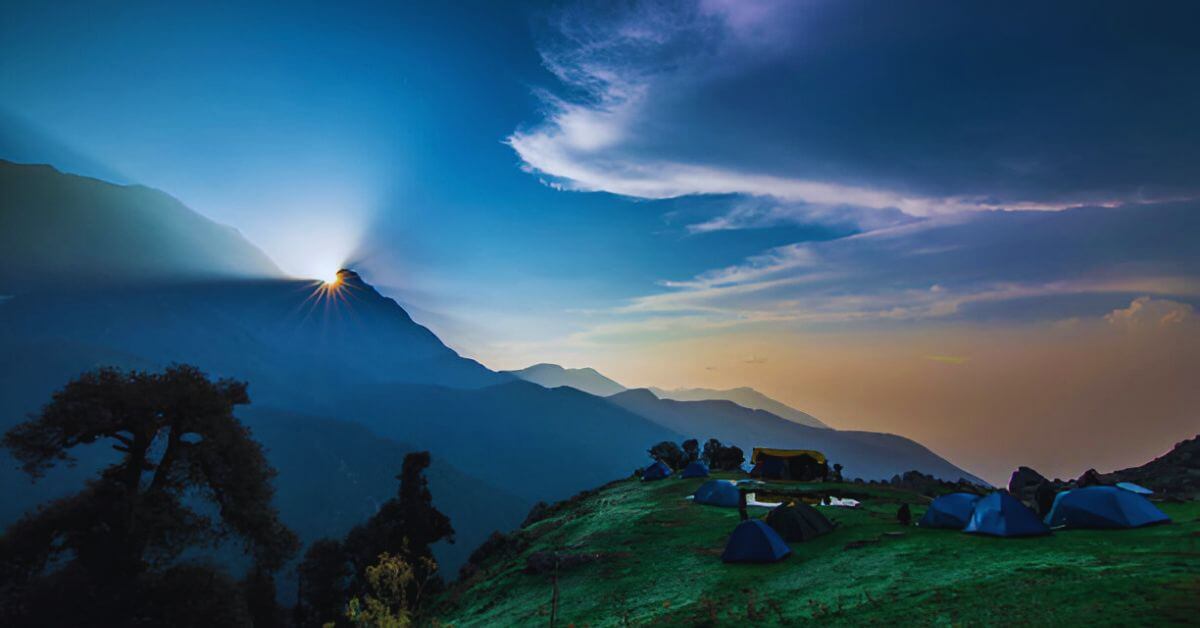
Weather: Summer is warm, with temperatures ranging from 16°C to 25°C during the day. However, this season also brings the monsoon rains in July and August, making the trail slippery and challenging.
Highlights:
- Lush Landscape: The rain transforms the landscape into a lush, green paradise, with the surrounding forests and meadows at their most vibrant.
- Lower Crowds: Monsoon deters many travelers, so this season sees fewer trekkers compared to spring and autumn.
- Adventure for Rain Lovers: If you’re someone who enjoys a bit of rain and is prepared for the challenges, the monsoon season can offer a unique trekking experience.
Ideal For: Experienced trekkers who don’t mind a bit of rain and want to avoid crowds. If you’re an adventure enthusiast looking to experience Triund in solitude, the monsoon season may be for you.
Caution: Trekking during the monsoon season can be risky due to slippery paths and landslides. It’s essential to check the weather forecast before planning your trip and to ensure you’re physically prepared for more challenging conditions.
What to Pack: Waterproof jacket, rain cover for backpacks, extra dry clothes, and good quality trekking shoes with a firm grip.
3. Autumn (September to November): Clear Skies and Crisp Air
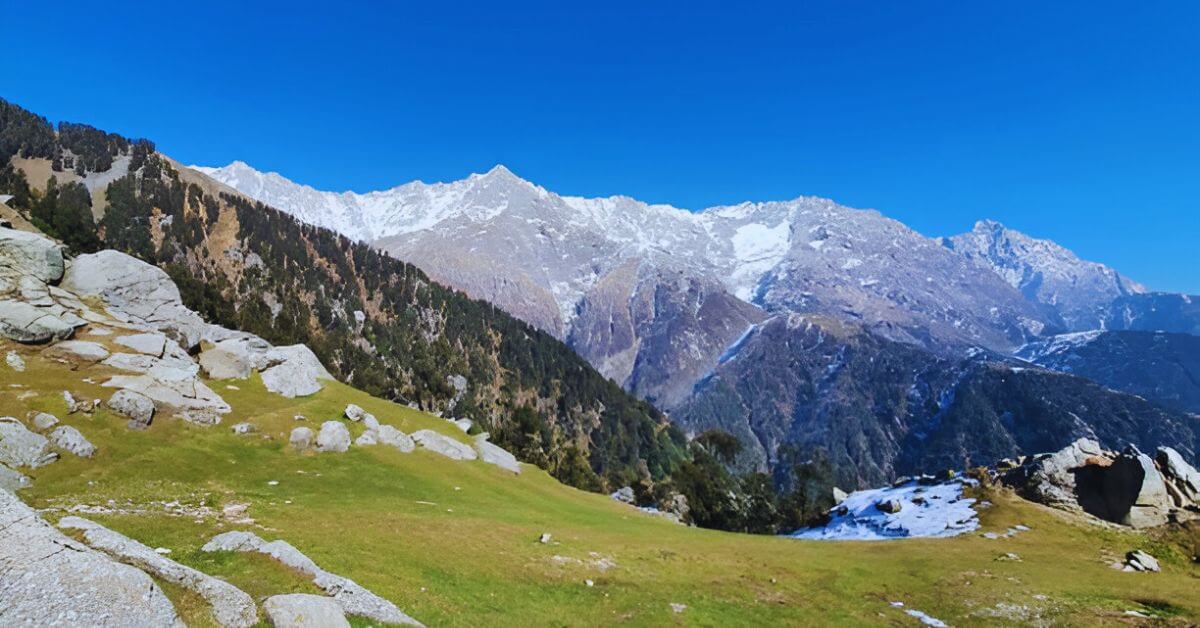
Weather: Autumn is widely considered the best season for Triund Trek. Temperatures are comfortable during the day (15°C to 20°C) and slightly chilly at night (around 5°C to 10°C).
Highlights:
- Crystal-Clear Views: Autumn provides some of the clearest skies, offering panoramic views of the Dhauladhar range and the distant valleys.
- Comfortable Weather: With crisp, cool air and stable temperatures, autumn offers ideal trekking conditions, making the trek comfortable yet invigorating.
- Peak Season: As one of the best times to visit, autumn attracts a lot of trekkers, especially in October. It’s recommended to start early or plan for weekdays to avoid larger crowds.
Ideal For: Those looking for the best trekking conditions with minimal risk of weather-related challenges. Photographers and nature lovers will find autumn particularly enchanting.
What to Pack: Light woolens for the day and heavier layers for the night, along with a quality camera for capturing the scenic beauty.
4. Winter (December to February): Snow-Covered Wonderland
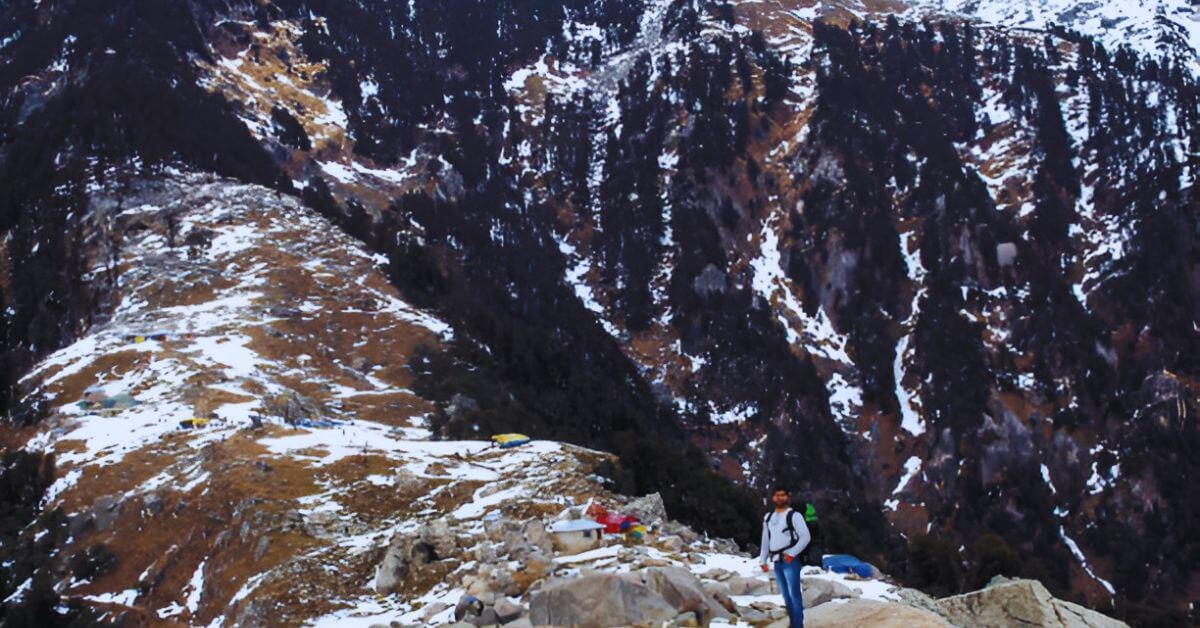
Weather: Winter turns Triund into a snowy paradise, with temperatures ranging from 10°C during the day to as low as -5°C at night. Snowfall usually begins in late December and lasts through February.
Highlights:
- Snow Trek king: For those willing to brave the cold, winter offers a magical, snow-laden landscape that transforms Triund into a winter wonderland.
- Fewer Crowds: The extreme weather conditions deter many, so this season sees fewer trekkers, offering a serene experience for those who venture out.
- Adventure and Challenge: Winter trekking on Triund is more challenging and requires proper gear, but it rewards trekkers with breathtaking views of snow-capped mountains and valleys.
Ideal For: Experienced trekkers and those looking to experience Triund under a blanket of snow. Winter trekking is not for the faint-hearted but can be highly rewarding for those well-prepared.
What to Pack: Thermal clothing, insulated jackets, snow boots, gloves, hats, and trekking poles for navigating snowy paths.
Caution: During peak winter months, heavy snowfall can make the trek more difficult and occasionally lead to temporary closures. It’s best to check with local authorities or guides for the latest information before planning a winter trek.
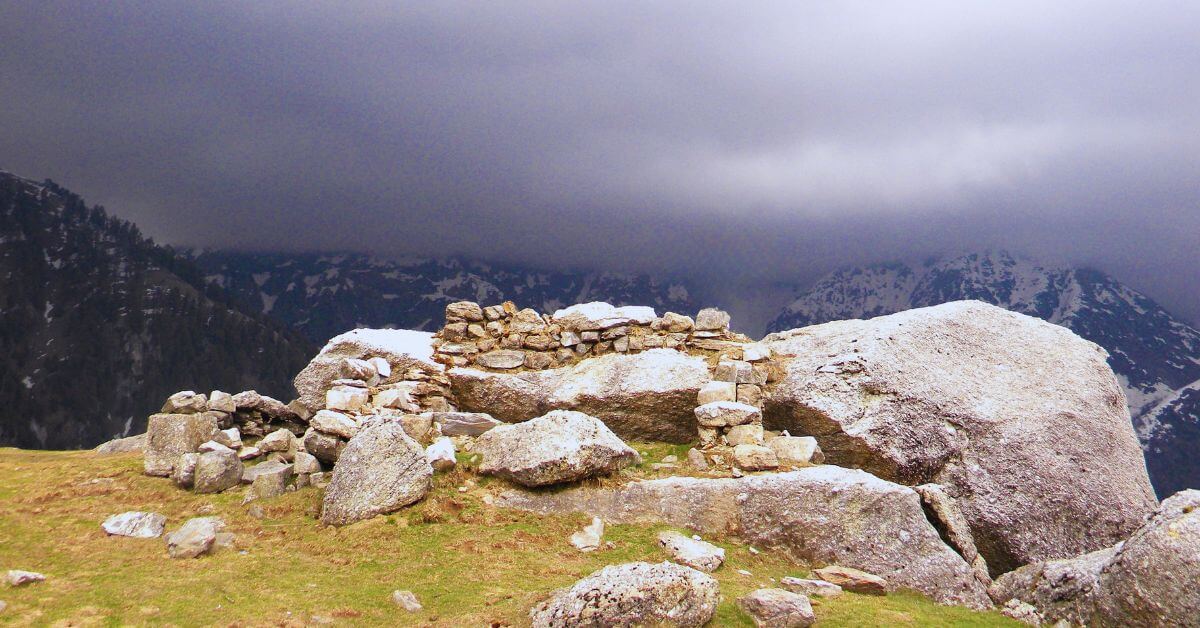
Month-by-Month Breakdown
Month |
Weather |
Crowds |
Highlights |
| March | Pleasant | Moderate | Wildflower bloom, clear views |
| April-May | Warm, Clear | Moderate | Ideal weather, scenic beauty |
| June | Warm, Pre-Monsoon | Low | Lush greenery |
| July-Aug | Rainy | Very Low | Green landscape, solitude |
| Sept-Oct | Cool, Clear Skies | High | Best views, comfortable weather |
| Nov | Crisp Air, Clear | Moderate | Cool, scenic |
| Dec-Feb | Cold, Snowy | Low | Snow trekking, winter scenery |
Tips for an Unforgettable Triund Trek Experience
- Book Accommodation in Advance: During peak seasons, accommodations around McLeod Ganj and Dharamkot fill up quickly, so it’s wise to book early.
- Start Early: To avoid crowds on busy weekends or peak seasons, start your trek early in the morning. This not only gives you a head start but also allows you to capture the sunrise along the trail.
- Pack Light but Smart: While the trek isn’t extremely challenging, carrying a light backpack will make your journey more enjoyable. Essential items include water, snacks, basic first-aid, and suitable clothing based on the season.
- Stay Hydrated and Respect the Environment: Carry a reusable water bottle and avoid littering to help preserve the pristine beauty of Triund.
- Hire a Guide in Winter: For winter treks, consider hiring a local guide who knows the trail well and can assist with navigation and safety.
- Respect Local Customs: As the trek passes through villages and areas inhabited by the Gaddi tribe, respecting local culture and customs adds to the positive trekking experience.
Final Thoughts
Triund Trek is truly an all-season destination, each time of the year bringing its charm to this Himalayan adventure. Whether you’re drawn to the vibrant blooms of spring, the lush greenery of the monsoon, the crystal-clear skies of autumn, or the snowy landscapes of winter, there’s an ideal time for everyone to experience this trek. Understanding the nuances of each season and preparing accordingly can make all the difference, turning a simple trek into an unforgettable journey.
If you’re ready to embark on a memorable adventure, Triund awaits, offering you both tranquility and thrill at the foothills of the majestic Dhauladhar range.
People Asking for Triund Trek - FAQs
Answer: The best time to visit Triund Trek is from March to June and September to November. During these months, the weather is pleasant, with clear skies and moderate temperatures, making it ideal for trekking. Avoid the monsoon season (July and August) due to slippery trails and landslide risks.
Answer: Yes, Triund Trek is accessible during winter (December to February), but the trail can be challenging due to snow, especially after heavy snowfall. Only experienced trekkers should attempt it in winter, and it’s essential to have proper winter gear.
Answer: The Triund Trek is considered an easy to moderate trek, making it suitable for beginners. The trek involves some steep sections but is manageable for most people in good health. It typically takes about 4–6 hours to reach the summit.
Answer: From March to June, temperatures range between 10°C and 25°C, providing a pleasant trekking experience. In winter, temperatures can drop to -5°C to 10°C, requiring warm clothing. Monsoon temperatures are similar to summer but with higher humidity.
Answer: Yes, Triund is generally safe for solo trekkers, especially during the peak season when the trail is busy with other trekkers. However, during off-peak months or in winter, it’s best to have a guide or trekking partner due to potentially challenging conditions.
Answer: Yes, camping at Triund Top is a popular activity, and several camping sites offer rental tents. However, it’s recommended to book in advance during peak season. Always check the weather and bring warm clothing, as temperatures can drop significantly at night.
Answer: While a guide isn’t mandatory, having one can enhance the experience, especially if you’re unfamiliar with the area. Guides can help with navigation and provide insight into local culture, flora, and fauna. A guide is advisable in winter when trails may be covered with snow.
Answer: There are no specific restrictions, but trekkers are encouraged to follow responsible trekking guidelines. Avoid littering, respect nature, and check for any forest department updates or advisories, especially during wildfire-prone seasons.
Answer: The Triund Trek starts from Mcleodganj, which is well-connected by road. You can reach Mcleodganj from Dharamshala via local buses, taxis, or auto-rickshaws. The nearest airport is Gaggal Airport (about 20 km away), and the nearest railway station is Pathankot (about 90 km away).
Answer: For Triund Trek, pack light yet essential items like comfortable trekking shoes, a water bottle, warm layers, rain gear (during monsoon), energy snacks, a flashlight, and a first-aid kit. In winter, ensure you carry extra layers and warm gloves, as temperatures can drop quickly.

